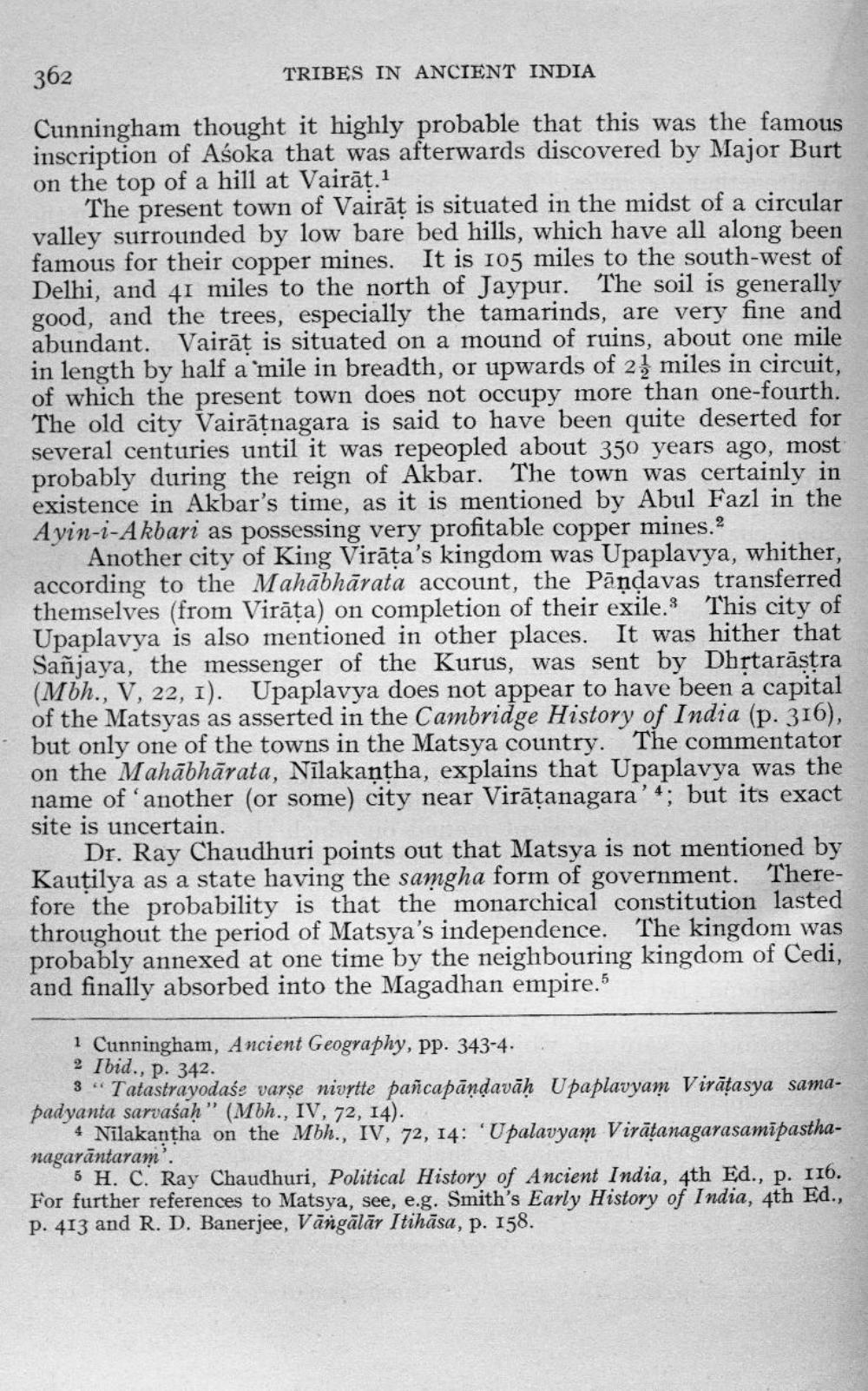________________
362
TRIBES IN ANCIENT INDIA Cunningham thought it highly probable that this was the famous inscription of Asoka that was afterwards discovered by Major Burt on the top of a hill at Vairāt.1
The present town of Vairāt is situated in the midst of a circular valley surrounded by low bare bed hills, which have all along been famous for their copper mines. It is 105 miles to the south-west of Delhi, and 41 miles to the north of Jaypur. The soil is generally good, and the trees, especially the tamarinds, are very fine and abundant. Vairāt is situated on a mound of ruins, about one mile in length by half a mile in breadth, or upwards of 2 miles in circuit, of which the present town does not occupy more than o
u town does not occupy more than one-fourth The old city Vairāțnagara is said to have been quite deserted for several centuries until it was repeopled about 350 years ago, most probably during the reign of Akbar. The town was certainly in existence in Akbar's time, as it is mentioned by Abul Fazl in the Avin-i-Akbari as possessing very profitable copper mines.
Another city of King Virāta's kingdom was Upaplavya, whither, according to the Mahābhārata account, the Pandavas transferred themselves (from Virāta) on completion of their exile. This city of Upaplavya is also mentioned in other places. It was hither that Sañjaya, the messenger of the Kurus, was sent by Dhrtarastra (Mbh., V, 22, I). Upaplavya does not appear to have been a capital of the Matsyas as asserted in the Cambridge History of India (p. 316), but only one of the towns in the Matsya country. The commentator on the Mahābhārata, Nīlakantha, explains that Upaplavya was the name of another (or some) city near Virātanagara' 4. but its exact site is uncertain.
Dr. Ray Chaudhuri points out that Matsya is not mentioned by Kautilya as a state having the samgha form of government. Therefore the probability is that the monarchical constitution lasted throughout the period of Matsya's independence. The kingdom was probably annexed at one time by the neighbouring kingdom of Cedi, and finally absorbed into the Magadhan empire. 5
1 Cunningham, Ancient Geography, pp. 343-4. 2 Ibid., p. 342.
3"Tatastrayodaśe varṣe nivytte pañcapāndavāḥ Upaplavyam Virātasya samapadyanta sarvaśah” (Mbh., IV, 72, 14).
4 Nilakantha on the Mbh., IV, 72, 14: 'Upalavyam Virātanagarasamīpasthanagarāntaram'.
5 H. C. Ray Chaudhuri, Political History of Ancient India, 4th Ed., p. 116. For further references to Matsya, see, e.g. Smith's Early History of India, 4th Ed., p. 413 and R. D. Banerjee, Vāngālār Itihāsa, p. 158.




